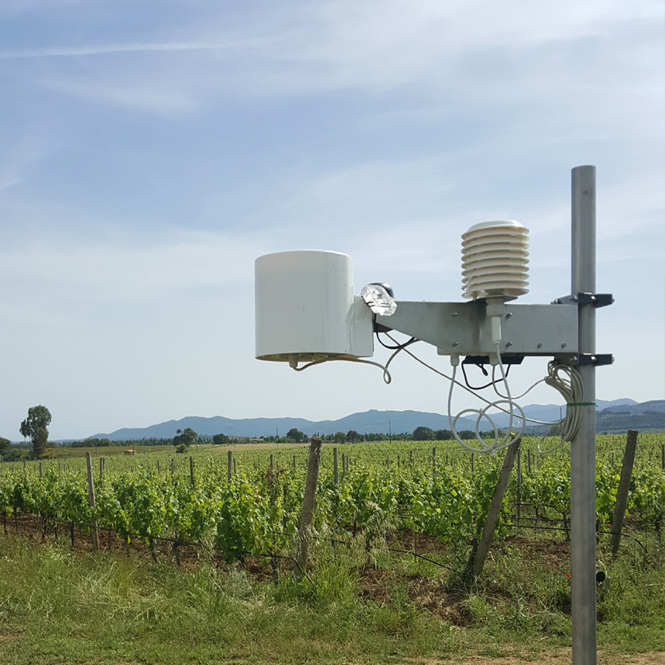
iMETOS IMT200
iMETOS IMT200 –Meteorological station is equipped with sensors for measuring:
• Rainfall amounts
• Air temperatures
• Relative air humidity
• Leaf humidity sensor
• Parameters: Dew point (Dev point), VPD, and Delta T are obtained by simplecalculations.
• In addition to the sensors with which the agrometeorological station isequipped, the iMETOS series has 5 additional digital inputs with automaticsensor recognition as well as extension connections, which enable theconnection of sensor chains (max. 600 sensors).
TEHNICAL SPECIFICATIONS
Additional connectors | The radio access point or SENTEK Drill&Drop sensors or ultrasonic wind sensor or two additional connectors |
Memory | 8 MB flash |
Internet access | GPRS, HDSPA, UMTS, WiFi, LTE class 1, LTE class M (Q2/2020) |
Notices/Notifications | SMS, configurable via the Internet |
Dimensions without sensor | 41 cm L x 13 cm W x 7 cm H |
Weight without sensor | 2.2 kg |
Measurement interval | 5 minutes (factory setting) |
Loging interval | 10-120 min (user selects value) |
Transmission frequency | The user can choose |
Battery | 6V, 4.5AH, Operating conditions: -35 °C to 80 °C |
Solar panel | Dimensions: 13.5 x 13.5 cm, 2 W solar panel |
iMETOS 3.3 meteorological station (without included sensors), data monitoring via the Internet, battery 4.5Ah, solar panel, UMTS, mounting equipment |
A complete solution for monitoring climate factors on your farm, pests, and diseases, and localized weather forecasting
iMETOS 3.3 IMT 200 is a robust and flexible solution that monitors all climatic conditions, the agrometeorological station operates on solar energy, i.e. it is equipped with a solar panel and battery (6V).
The station has a built-in UMTS/CDMA modem for direct communication with the AgroMonitor platform and can manage up to 600 sensors. Due to the extremely persistent internal memory of 8 MB, it can store up to about 1 month of data.
Also, iMETOS can send notifications via SMS messages (the user defines the numbers to which notifications will be sent), to warn of critical phenomena such as frost, heavy rain, high temperature, or some other phenomenon.
The data is regularly transferred to the AgroMonitor platform, and you can access it from anywhere at any time in real-time via the Internet. In addition to accessing historical data and daily evapotranspiration values, you can also take advantage of decision-support solutions such as localized weather forecasting, disease models, pest management models, and irrigation management.